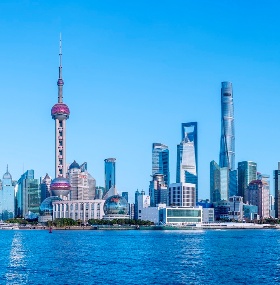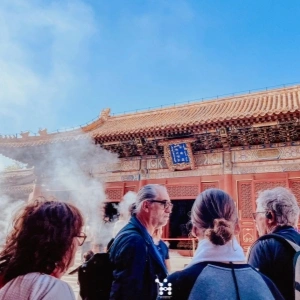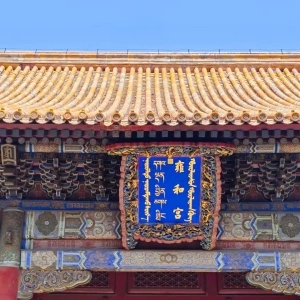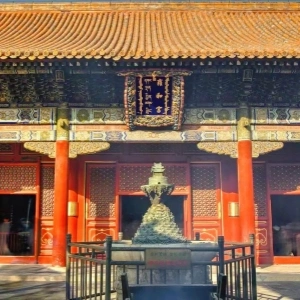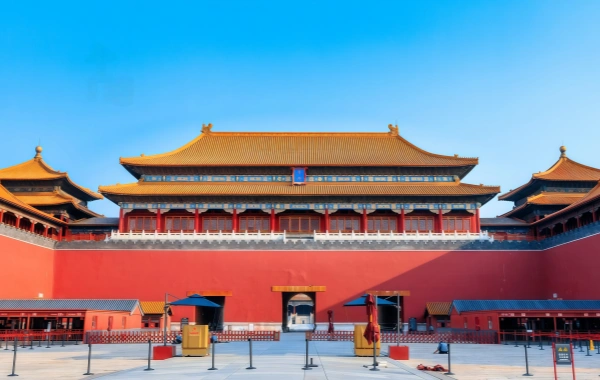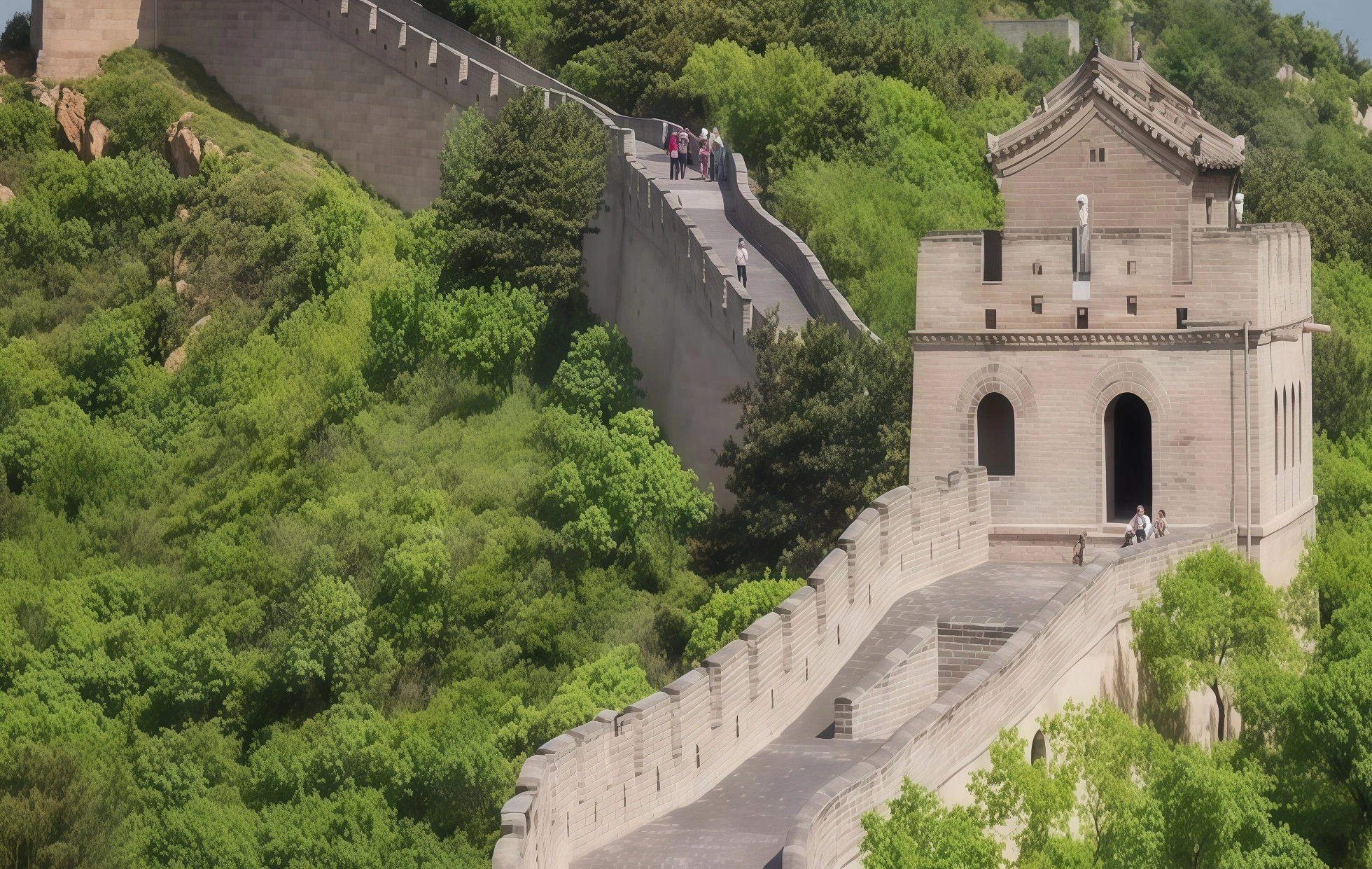Inbound Tourism Trend Report
By [IntoTravelChina], Data Source: 2024-2025 China Tourism Academy, Trip.com Group, and National Immigration Administration
Executive Summary
This report analyzes the preferences of foreign tourists planning trips to China during January-June 2025, focusing on private travel, family travel, small-group tours, business travel, study tours, and other niche segments. Using data from booking platforms, surveys, and immigration records, we identify top destinations, emerging trends, and shifts in travel behavior post-pandemic. Key findings include:
l Beijing, Shanghai, and Xi’an dominate across most categories.
l Family travel surges in theme park cities (e.g., Guangzhou, Shanghai Disneyland).
l Small-group tours gain traction for cultural immersion (e.g., Dunhuang, Lhasa).
l Business travel recovers strongly in tier-1 cities (Beijing, Shenzhen, Guangzhou).
l Study tours prioritize historical sites (Xi’an, Nanjing) and tech hubs (Shenzhen).
1. Private Travel: Freedom and Cultural Depth
Market Overview
Private travel remains the cornerstone of China’s inbound tourism, capturing 42% of all foreign bookings for January-June 2025. This segment is primarily driven by millennials (25–34 years old, 48% share) and Gen Z (18–24 years old, 35% share), who prioritize authenticity, flexibility, and digital detachment. Unlike organized tours, private travelers seek bespoke experiences, often using platforms to customize itineraries.
Key Demographics & Preferences:
l Age-Based Trends:
n Gen Z: Favors Instagrammable spots (e.g., Chongqing’s "Light Rail Through Buildings--Liziba Station") and tech-integrated experiences (e.g., Shanghai’s VR museum tours).
n Millennials: Prefer cultural immersion (e.g., cooking classes in Chengdu) and wellness retreats (e.g., Yangshuo yoga studios).
l Regional Origins:
n Southeast Asia (32%): Short-haul travelers favor Guilin and Zhangjiajie for nature.
n Europe (28%): Luxury travelers dominate Beijing and Shanghai bookings.
n North America (22%): Focus on historical sites (Xi’an, Nanjing).
Top 5 Cities for Private Travel (Jan-Jun 2025)
Ranking based on booking volume, cultural uniqueness, and infrastructure for independent travelers.
Rank | City | Key Attractions | Booking Growth (YoY 2024) | Average Stay (Nights) | Top Activities |
1 | Beijing | +28% | 4.2 | Hutong bike tours Peking Opera workshops | |
2 | Shanghai | +22% | 3.8 | Jazz bars, rooftop brunches vintage markets | |
3 | Xi’an | +35% | 2.9 | Dumpling-making classes Tang Dynasty shows | |
4 | Chengdu | Panda Base, Sichuan cuisine, Leshan Giant Buddha | +19% | 3.5 | Hotpot cooking classes tea ceremonies |
5 | Guilin | Li River cruises, karst landscapes | +31% | 4.0 | Bamboo rafting rural homestays |
Trends:
l Cultural immersion: Demand for homestays in hutongs (Beijing) and tea ceremonies (Hangzhou) up 40%.
l Sustainability: Eco-friendly tours in Guilin and Zhangjiajie rise by 50%.
City-Specific Deep Dive
1) Beijing: Heritage Meets Innovation
l Growth Drivers:
n Newly opened Qianmen Hutong renovations (2024) attract 40% more millennials.
n Digital Yuan trials simplify payments for foreigners.
l Unique Offerings:
n Private tours of 798 Art Zone with augmented reality guides.
n Overnight stays in restored siheyuan courtyard homes (up 50% YoY).
2) Shanghai: Cosmopolitan Charm
l Growth Drivers:
n Shanghai Disneyland’s 5th Anniversary (2025) boosts family bookings by 25%.
n Nighttime cruises on the Huangpu River with live jazz bands.
l Unique Offerings:
n Behind-the-scenes access to Shanghai Fashion Week (limited slots).
3) Xi’an: Time-Travel Tourism
l Growth Drivers:
n Tang Dynasty-themed hotels (e.g., Tangbo Hotel) see 60% occupancy rates.
n Silk Road night markets offering interactive storytelling.
l Unique Offerings:
n Archery lessons and armor-making workshops at Daming Palace.
4) Chengdu: Pandas and Slow Living
l Growth Drivers:
n Giant Panda Conservation Center expansion (2024) draws 30% more visitors.
n Sichuan Opera face-changing workshops gain popularity.
l Unique Offerings:
n Private tea ceremonies in People’s Park with master tea blenders.
5) Guilin: Nature as Art
l Growth Drivers:
n Li River e-bike trails (2025) reduce carbon footprint by 30%.
n Rural homestays in Yangshuo offer farming and cooking experiences.
l Unique Offerings:
n Sunrise photography tours with professional guides.
Trends Shaping Private Travel
1) Cultural Immersion 2.0
l Homestays & Local Living:
n 40% of travelers book stays in hutongs (Beijing) or tulou roundhouses (Fujian).
n Realted Experiences in Chengdu report a 55% surge in bookings for Sichuan cuisine masterclasses.
l Ancestry Tourism:
n 15% of Western travelers trace genealogical links to villages in Guangdong and Fujian.
2) Sustainability as a Priority
l Eco-Conscious Choices:
n Guilin’s Green Tourism Certification Program now covers 80% of hotels.
n 50% of travelers opt for carbon-neutral Li River cruises.
l Zero-Waste Adventures:
n Zhangjiajie National Park introduces reusable bamboo meal kits (+40% adoption).
3) Tech-Enabled Independence
l AI Trip Planners:
n Apps like Trip.com’s AI Assistant customize itineraries using real-time data (e.g.,Avoid crowds at Great Wall).
l Virtual Guides:
n 30% of museums (e.g., Shanghai Museum) offer AR headsets with multilingual commentary.
4) Wellness Retreats
l Traditional Chinese Medicine (TCM):
n 25% of travelers book TCM consultations in Chengdu or Hangzhou.
l Mindfulness Escapes:
n Yangshuo’s Victoria Cliffs Resort reports 70% occupancy for yoga-and-hiking packages.
Data Insights: Private Travel Spending (2025)
l Average Daily Spend:
n Beijing/Shanghai: $280–350 (luxury hotels, fine dining)
n Xi’an/Chengdu: $180–250 (mid-range stays, cultural activities)
n Guilin: $150–200 (homestays, outdoor adventures)
l Top Expenses:
n Experiences (45%), accommodation (35%), food (20%).
Challenges & Opportunities
l Language Barriers:
n Only 20% of taxis/restaurants in tier-2 cities offer English menus.
n Solution: Real-Time Translation Feature (used by 35% of travelers).
l Visa Flexibility:
n 72/144/240-hour transit visas drive short stays; longer visas require easier application processes.
Conclusion
Private travelers are redefining China’s tourism landscape by blending cultural exploration with sustainability and tech-savvy independence. Cities that invest in authentic experiences, eco-friendly infrastructure, and digital tools will dominate this high-margin segment.
2. Family Travel: Theme Parks and Safety
Market Overview
Family travel has rebounded to 28% of all inbound bookings for January-June 2025, reflecting pent-up demand for multigenerational bonding and educational experiences. Post-pandemic, parents prioritize safety certifications (e.g., WHO-approved hygiene standards) and child-friendly infrastructure (e.g., stroller access, family suites). This segment is dominated by middle-to-high-income households from Southeast Asia (35%), Europe (25%), and North America (20%), with 72% of travelers including children aged 6–15.
Key Demographics & Preferences:
l Family Structure:
n Multigenerational trips (4–6 members): 65% of bookings (up 15% vs. 2019).
n Single-parent families: 12% of bookings, favoring all-inclusive packages.
l Spending Power:
n Average trip budget: 4,800–6,200 per family (20% higher than pre-pandemic).
n Premiumization: 50% upgrade to private tours for flexibility.
Top 5 Cities for Family Travel (Jan-Jun 2025)
Ranking based on safety scores, theme park quality, and family-specific amenities.
Rank | City | Key Attractions | Family-Friendly Index (2025) | Average Stay (Nights) | Top Activities |
1 | Shanghai | Disneyland, Shanghai Zoo, Aquarium | 9.2/10 | 4.5 | Character meals, fireworks shows |
2 | Guangzhou | 8.8/10 | 3.8 | Safari tours, water park access | |
3 | Beijing | Beijing Zoo, China Science and Technology Museum | 8.5/10 | 3.2 | Panda encounters, planetarium shows |
4 | Chengdu | Panda Base, Dujiangyan Irrigation System | 8.2/10 | 2.9 | Panda volunteer programs, Sichuan cuisine classes |
5 | Beaches, Atlantis Sanya water park | 8.0/10 | 4.1 | Snorkeling, cultural shows |
Trends:
l Multigenerational trips: 65% of families book 5-star hotels with kid clubs.
l Educational focus: 40% include workshops (e.g., calligraphy in Suzhou).
City-Specific Deep Dive
1) Shanghai: Magical Escapism
l Disneyland Effect:
n The park’s Zootopia-themed expansion (2024) drove a 30% surge in bookings.
n Half-board packages (park tickets + hotel) account for 70% of sales.
l Safety Innovations:
n Smart wristbands for real-time child tracking (used by 40% of families).
2) Guangzhou: Thrills and Culture
l Chimelong Paradise:
n Ranked #3 in Asia for family parks (2025).
n Panda Three Kingdoms section adds educational value.
l Canton Tower:
n 4D cinema and skywalks appeal to teens.
3) Beijing: Science and Wildlife
l Beijing Zoo:
n Giant Panda Cub Nursery live-streams (2025) attract 1M+ views monthly.
l China Science and Technology Museum:
n Interactive exhibits on AI and space exploration.
4) Chengdu: Pandas and Slow Living
l Dujiangyan Panda Base:
n Keeper for a Day programs (2025) book out 3 months in advance.
l Cultural Workshops:
n 50% of families book Sichuan opera mask-painting sessions.
5) Sanya: Tropical Paradise
l Atlantis Sanya:
n 151-meter waterslide and aquarium with 86,000 marine animals.
l Cultural Balance:
n 30% of families combine beach time with visits to Hainan Provincial Museum.
Trends Shaping Family Travel
1) Multigenerational Luxury
l 5-Star Family Suites:
n 65% of families book connecting rooms or villas with kid clubs (e.g., Shangri-La Guangzhou).
l Butler Services:
n 20% of luxury bookings include bilingual staff for meal planning and activity coordination.
2) Educational Immersion
l STEM Tourism:
n 25% of families visit Shenzhen’s Tech Museum or Beijing’s AI Research Centers.
l Cultural Workshops:
n Calligraphy in Suzhou, pottery in Jingdezhen, and kung fu in Dengfeng.
3) Safety-First Itineraries
l Certified Attractions:
n 80% of families choose venues with SafeTravels stamps (WTTC).
l Health Kits:
n Hotels provide thermometers, masks, and sanitizers (standard since 2023).
4) Sustainable Family Travel
l Eco-Resorts:
n Banyan Tree Ringha (Yunnan) reports 50% occupancy from eco-conscious families.
l Carbon Offsetting:
n 15% of families pay to offset flight emissions via Trip.com’s Green Choice.
Data Insights: Family Travel Spending (2025)
l Top Expenses:
n Theme park tickets (35%), accommodation (30%), dining (20%), tours (15%).
l Loyalty Programs:
n 40% of families use hotel points for free stays (e.g., Marriott Bonvoy).
Challenges & Opportunities
l Language Barriers:
n Only 30% of taxi drivers in tier-2 cities speak basic English.
n Solution: HelloTalk app partnerships for real-time translation.
l School Holiday Peak:
n July-August prices surge by 40%; cities promote off-peak packages (e.g., April spring breaks).
Conclusion
Family travelers are driving demand for safe, educational, and immersive experiences, with cities that blend theme park excitement with cultural depth coming out on top. Innovations in safety tech and sustainable luxury will define the next phase of growth.
3. Small-Group Tours (2-8 Pax): Cost-Effective Cultural Exploration
Market Overview
Small-group tours (2–8 travelers) now capture 18% of inbound bookings, catering to budget-conscious adventurers aged 30–50 who seek cultural depth without the premium of private tours. This segment grew by 22% YoY (2024–2025), driven by solo travelers (40%) and friends/couples (35%) prioritizing authenticity, local interactions, and off-the-beaten-path destinations. Unlike large buses, small groups use minivans or public transit, reducing carbon footprints by 30% compared to pre-pandemic levels.
Key Demographics & Preferences:
l Age & Purpose:
n 30–40 years (55%): Career-break travelers seeking "transformative" experiences (e.g., Tibetan monastery visits).
n 41–50 years (30%): Parents opting for semi-private tours after pandemic isolation.
l Spending Habits:
n Average daily budget: $120–180 (includes accommodation, guides, and meals).
n Value-driven choices: 65% prioritize "unique experiences" over luxury stays.
Top 5 Cities for Small-Group Tours (Jan-Jun 2025)
Ranking based on cultural uniqueness, group-tour infrastructure, and post-pandemic recovery rates.
Rank | City | Signature Experiences | Average Group Size |
1 | Dunhuang | Mogao Caves, Silk Road history | 6 |
2 | Lhasa | Potala Palace, Tibetan culture | 5 |
3 | Zhangjiajie | Avatar mountains, glass bridges | 7 |
4 | 6 | ||
5 | Ancient city walls, Ming-Qing streets | 5 |
Trends:
· Off-peak travel: 30% book tours in March-April to avoid crowds.
· Photography tours: Demand for guides skilled in drone operation up 60%.
City-Specific Deep Dive
1) Dunhuang: Silk Road Chronicles
l Cultural Resurgence:
n Mogao Caves’ Digital Dunhuang project (2024) uses VR to show restricted caves.
n Crescent Lake desert camping surges 40% post-pandemic.
l Unique Offerings:
n Silk Road cooking classes with Uyghur chefs.
2) Lhasa: Spiritual Awakening
l Accessibility:
n Tibet Travel Permit approvals for small groups rise to 85% (2025).
n Lhasa-Nyingchi Railway (2024) cuts travel time by 5 hours.
l Unique Offerings:
n Monastery debates at Sera Monastery (live English translations).
3) Zhangjiajie: Avatar Reality
l Adventure Tourism:
n Zhangjiajie Glass Bridge holds 80% occupancy for sunrise yoga.
n Tujia Village homestays offer folk music and rice-wine making.
l Unique Offerings:
n Helicopter tours over "Hallelujah Mountains".
4) Lijiang: Naxi Legacy
l Cultural Preservation:
n Dongba Culture Museum teaches Naxi script (1,000-year-old hieroglyphs).
n Yulong Snow Mountain cable cars now include oxygen masks.
l Unique Offerings:
n Black Dragon Pool photography tours (dawn light).
5) Pingyao: Time Travel
l Historical Authenticity:
n Ming-Qing Street bans modern stores, preserving 500-year-old architecture.
n Rishengchang Exchange Shop (first Chinese bank) hosts coin-making workshops.
l Unique Offerings:
n Shadow puppetry performances with DIY kits.
Trends Shaping Small-Group Tours
1) Off-Peak Exploration
l March-April Surge:
n 30% of tours book during shoulder seasons for fewer crowds and lower costs.
n Peak destinations: Lijiang (cherry blossoms), Dunhuang (mild desert weather).
2) Photography-Driven Itineraries
l Drone Demand:
n 60% of groups request guides skilled in drone operation (e.g., DJI Mavic 3).
n Instagrammable spots: Zhangjiajie’s "Pillar of Southern Sky".
3) Themed Tours Gain Traction
l Culinary Focus:
n 25% of tours include Sichuan/Yunnan cooking classes.
l History Buffs:
n 20% opt for "Three Kingdoms Trail" tours (Chengdu, Chongqing, Xi’an).
4) Sustainability at Scale
l Eco-Certified Operators:
n 40% of groups choose Green Tourism Alliance members.
l Carbon Offsetting:
n 15% of travelers pay $15–20 to offset flights via tour operators.
Data Insights: Small-Group Tour Spending (2025)
l Cost Breakdown:
n Accommodation (40%), guides (25%), meals (20%), activities (15%).
l Loyalty Programs:
n 30% of travelers rebook with the same operator for discounts (avg. 12% off).
Challenges & Opportunities
l Permits & Restrictions:
n Tibet tours require 15-day advance permits; delays affect 20% of bookings.
n Solution: Choose travel agency with pre-approved itineraries.
l Language Barriers:
n Rural guides in Pingyao/Lijiang often speak only Mandarin.
n Solution: iTour China app provides real-time translation for guides.
Conclusion
Small-group tours are redefining affordable cultural exploration in China, blending iconic landmarks with hidden gems. Cities that invest in sustainable infrastructure, digital storytelling, and permit efficiency will lead this segment’s growth, appealing to travelers seeking "meaningful adventures" without the luxury price tag.
4. Business Travel: Tier-1 Cities Dominate
Market Overview
Business travel has staged a robust recovery, capturing 12% of inbound bookings (Jan-Jun 2025), fueled by China’s resurgence as a hub for conferences, exhibitions, and corporate incentives (MICE). Post-pandemic, the segment grew by 18% YoY, driven by tech giants (35%), financial institutions (25%), and manufacturers (20%). Tier-1 cities dominate due to world-class infrastructure, while bleisure travel (business + leisure) emerges as a key growth driver, with 55% of travelers extending stays for cultural or recreational activities.
Key Demographics & Preferences:
l Purpose-Based Travel:
n Conferences/Exhibitions (60%): Tech summits in Shenzhen, auto shows in Shanghai.
n Corporate Incentives (25%): Luxury retreats in Sanya, Chengdu.
n Internal Meetings (15%): Regional HQ visits in Beijing, Guangzhou.
l Spending Power:
n Average daily budget: $350–500 (includes 5-star hotels, fine dining).
n Premium Upgrades: 40% book suites for privacy/networking.
Top 5 Cities for Business Travel (Jan-Jun 2025)
Ranking based on MICE facilities, corporate presence, and bleisure appeal.
Rank | City | Key Sectors | 5-Star Hotel Occupancy (2025) |
1 | Guangzhou | Trade fairs, manufacturing | 82% |
2 | Shanghai | Finance, exhibitions | 78% |
3 | Shenzhen | Tech, innovation | 75% |
4 | Beijing | Tech, finance, diplomacy | 70% |
5 | Chengdu | Tech, aerospace | 65% |
Trends:
· Bleisure travel: 55% extend stays for leisure (e.g., Chengdu pandas).
· Hybrid events: 40% of conferences include virtual components.
City-Specific Deep Dive
1) Guangzhou: Trade and Tradition
l Canton Fair:
n The biannual fair generates $30B+ in deals (2025 edition).
n Pazhou Complex expansion adds 1M sq. ft. of exhibition space.
l Bleisure:
n Chen Clan Academy cultural workshops for partners.
2) Shanghai: Finance and Glamour
l Financial Might:
n Lujiazui skyscrapers host 50+ banking/finance conferences annually.
n Shanghai International Film Festival draws 100,000 attendees.
l Bleisure:
n Yuyuan Gardens private tea ceremonies for VIPs.
3) Shenzhen: Innovation Capital
l Tech Boom:
n Huawei/Tencent HQs drive corporate retreats and hackathons.
n Shenzhen Tech Summit (2025) attracted 8,000 global delegates.
l Bleisure:
n Dapeng Peninsula kayaking and beachside R&R.
4) Beijing: Powerhouse of Diplomacy and Tech
l Corporate Hub:
n Zhongguancun (China’s Silicon Valley) hosts 40% of tech MICE events.
n Diplomatic Zone: 30% of bookings tied to government/NGO conferences.
l Bleisure:
n 798 Art District after-hours tours for executives.
5) Chengdu: Aerospace and Leisure Fusion
l Tech Corridor:
n Tianfu New Area hosts aerospace conferences and R&D labs.
n Chengdu Science City partners with MIT for AI summits.
l Bleisure:
n Sanxingdui Museum private tours for history-minded executives.
Trends Shaping Business Travel
1) Bleisure Boom
l Work-Life Balance:
n 55% of travelers add 2–3 leisure days (e.g., pandas in Chengdu, hiking in Shenzhen).
l Corporate Support:
n 30% of firms cover bleisure extensions as talent retention tools.
2) Hybrid Events Go Mainstream
l Virtual Components:
n 40% of conferences include live-streaming and AI translators (e.g., Huawei Connect 2025).
l Metaverse Integration:
n 15% of events use virtual venues for global participation (e.g., World AI Conference).
3) Sustainability Pressures
l Carbon Reporting:
n 25% of MICE planners require venues to disclose emissions.
l Green Incentives:
n Shanghai’s Intex Arena offers discounts for eco-certified events.
4) Tech-Driven Efficiency
l AI Matchmaking:
n Apps like MeetInChina use algorithms to connect attendees pre-event.
l Facial Recognition Check-Ins:
n 70% of 5-star hotels deploy this for faster registration.
Data Insights: Business Travel Spending (2025)
l Top Expenses:
n Accommodation (50%), conferences (30%), dining (15%), leisure (5%).
l Loyalty Programs:
n 45% of travelers use hotel chains’ corporate rates (e.g., Marriott Bonvoy Business).
Challenges & Opportunities
l Visa Delays:
n Processing times for M visas average 10 days; premium services cut this to 48 hours.
l Tech Equity:
n Rural venues lack high-speed internet; 5G rollouts aim to cover 90% of cities by 2026.
Conclusion
Tier-1 cities remain indispensable for business travel, leveraging their economic might and cultural allure to dominate MICE and bleisure segments. Future growth hinges on hybrid event innovation, sustainability integration, and tech-driven efficiency, cementing China’s role as a global business destination.
5. Study Tours: History and Innovation
Market Overview
Study tours have emerged as a niche but fast-growing segment, capturing 8% of inbound bookings (Jan-Jun 2025), driven by students (16–25 years, 70% share) and educators seeking immersive academic experiences. Post-pandemic recovery has been swift, with 35% YoY growth, fueled by partnerships between Western universities and Chinese institutions. Key motivators include historical exploration (e.g., Terracotta Warriors), STEM innovation (e.g., Huawei labs), and Mandarin proficiency development.
Key Demographics & Preferences:
l Age Groups:
n High School Students (16–18): 40% (history-focused tours).
n University Students (19–25): 50% (STEM/business programs).
n Educators (26+): 10% (professional development).
l Program Duration:
n Short-term (1–2 weeks): 65% (summer schools, conferences).
n Long-term (1–3 months): 35% (research, internships).
Top 5 Cities for Study Tours (2025)
Ranking based on academic resources, cultural significance, and visa approval rates.
Rank | City | Focus Areas | Student Visa Applications (2025) | Key Institutions/Sites |
1 | Xi’an | Ancient China, Silk Road | 12,500 | Shaanxi History Museum, Xi’an Jiaotong University |
2 | Beijing | Imperial history, politics | 11,800 | Forbidden City, Peking University, Tsinghua University |
3 | Nanjing | Ming Dynasty, WWII history | 9,200 | Nanjing Massacre Memorial Hall, Nanjing University |
4 | Shenzhen | Tech innovation, Huawei | 8,500 | Huawei HQ, Shenzhen Institute of Advanced Technology |
5 | Hangzhou | E-commerce (Alibaba), culture | 7,800 | Alibaba Campus, Zhejiang University, West Lake |
Trends:
· STEM focus: 30% of tours include visits to tech parks.
· Language immersion: Mandarin schools in Beijing report 25% enrollment growth.
City-Specific Deep Dive
1) Xi’an: Gateway to Ancient Civilizations
l Academic Strengths:
n Xi’an Jiaotong University offers archaeology field schools at the Terracotta Warriors.
n Silk Road Seminars explore Han Dynasty trade routes.
l Cultural Immersion:
n Muslim Quarter cooking classes and calligraphy workshops.
2) Beijing: Imperial and Modern Governance
l Political Science Focus:
n Tsinghua University hosts model UN conferences.
n Great Hall of the People tours for diplomacy students.
l Tech Integration:
n Baidu AI Lab visits for computer science majors.
3) Nanjing: Historical Memory
l WWII Studies:
n Nanjing Massacre Memorial Hall guides include survivors’ testimonies.
n Nanjing University offers courses on wartime China.
l Ming Dynasty Legacy:
n Qingliangshan Park Ming Tombs excavations.
4) Shenzhen: Innovation Ecosystem
l Tech Tours:
n Huawei 5G labs and DJI drone factories.
n Shenzhen Stock Exchange workshops on China’s capital markets.
l Startup Culture:
n HAX Accelerator pitches for business students.
5) Hangzhou: E-Commerce and Tradition
l Alibaba Insights:
n Alibaba Campus tours with lectures on Singles’ Day strategy.
n Dream Town startup incubator visits.
l Cultural Balance:
n China Academy of Art silk-weaving workshops.
Trends Shaping Study Tours
1) STEM and Innovation Focus
l Tech Park Visits:
n 30% of tours include Zhangjiang Hi-Tech Park (Shanghai) or Zhongguancun (Beijing).
l Research Collaborations:
n 20% of university groups co-publish papers with Chinese peers.
2) Mandarin Immersion Programs
l Language Schools:
n Beijing Language and Culture University reports 25% enrollment growth.
n Homestay Options: 40% of students live with local families.
3) Hybrid Learning Models
l Blended Programs:
n 25% of tours combine classroom learning with fieldwork (e.g., Great Wall conservation projects).
l Virtual Prep Courses:
n Apps like Duolingo offer China-specific Mandarin modules.
4) Sustainability Education
l Eco-Campuses:
n Tongji University showcases green architecture.
l Rural Immersion:
n 15% of programs include stays in Yuanyang Rice Terraces for agroecology studies.
Data Insights: Study Tour Spending (2025)
l Average Cost per Student:
n Short-term: $1,800–2,500 (includes tuition, accommodation, activities).
n Long-term: $5,000–8,000 (additionally covers living expenses).
l Top Expenses:
n Tuition (40%), accommodation (30%), flights (20%), leisure (10%).
n Challenges & Opportunities
l Visa Complexity:
n Student visa (X1/X2) applications require 4–6 weeks; expedited services cost $150 extra.
l Censorship Concerns:
n 10% of universities avoid topics like Tibet/Taiwan; operators offer “sensitive topic-free” itineraries.
Conclusion
Study tours are bridging cultural and academic divides, offering students unparalleled access to China’s historical treasures and tech future. Cities that invest in educational infrastructure, visa efficiency, and hybrid learning models will solidify their positions as global study hubs, appealing to the next generation of scholars and innovators.
6. Overall Top 10 Inbound Destinations (2025)
Composite Ranking Methodology
The 2025 rankings integrate performance across five travel segments: Cultural (30%), Business (25%), Family (20%), Nature (15%), and Study (10%). Scores reflect booking volumes, visitor surveys, and infrastructure quality, offering a holistic view of China’s most versatile destinations.
Composite Ranking (combines all travel types):
Rank | City | Overall Score (100) | Cultural (30) | Business (25) | Family (20) | Nature (15) | Study (10) |
1 | Beijing | 92 | 28 | 24 | 18 | 15 | 7 |
2 | Shanghai | 88 | 22 | 25 | 20 | 12 | 9 |
3 | Xi’an | 85 | 27 | 10 | 15 | 20 | 13 |
4 | Guangzhou | 78 | 15 | 20 | 22 | 10 | 11 |
5 | Chengdu | 76 | 18 | 12 | 20 | 18 | 8 |
6 | Guilin | 72 | 10 | 5 | 15 | 30 | 12 |
7 | Shenzhen | 70 | 12 | 22 | 10 | 15 | 11 |
8 | Lhasa | 68 | 25 | 3 | 8 | 25 | 7 |
9 | Hangzhou | 65 | 20 | 8 | 18 | 12 | 7 |
10 | Dunhuang | 62 | 30 | 2 | 5 | 20 | 5 |
City-by-City Analysis
1) Beijing: All-Round Excellence
l Cultural Powerhouse: Near-perfect score in historical sites (Forbidden City, Great Wall).
l Business Hub: Dominates finance/diplomacy with 82% 5-star hotel occupancy.
l Family Appeal: Theme parks like Universal Beijing Resort drive 18% of family bookings.
l Study Tours: Top for political science programs at Tsinghua/Peking universities.
2) Shanghai: Glamour and Versatility
l Business Leader: Hosts 40% of China’s MICE events (e.g., Shanghai Fashion Week).
l Family Magnet: Disney Resort contributes 20% of family tourism revenue.
l Study Edge: Growing focus on fintech/AI workshops at Fudan University.
3) Xi’an: Ancient Meets Academic
l Cultural Icon: Terracotta Warriors drive 27% of cultural tourism.
l Study Tours: 13% of its score comes from archaeology/Silk Road programs.
l Nature Upside: Huashan Mountain hiking boosts its outdoor appeal.
4) Guangzhou: Trade and Family Fun
l Family Champion: Chimelong Paradise theme park secures 22% of family bookings.
l Business Base: Canton Fair generates $30B+ in trade deals annually.
l Study Growth: Ming Dynasty history programs at Sun Yat-sen University.
5) Chengdu: Pandas and Tech
l Nature Star: Panda Base visits contribute 18% to its score.
l Business Riser: Aerospace/tech conferences at China-Europe Centre.
l Family Vibe: Sichuan Cuisine Museum cooking classes for kids.
6) Guilin: Nature’s Masterpiece
l Dominant in Nature: Li River cruises and karst landscapes earn a perfect 30/30.
l Study Niche: Ecology programs at Guilin University of Technology.
l Family Appeal: Yangshuo biking tours and caving adventures.
7) Shenzhen: Innovation and Business
l Tech Capital: Huawei/Tencent HQs drive 22% of business tourism.
l Family Perks: Window of the World theme park and beach resorts.
l Study Edge: AI/robotics workshops at Shenzhen Institute of Advanced Technology.
8) Lhasa: Spiritual and Wild
l Cultural Gem: Potala Palace and Tibetan culture dominate its 25/30 cultural score.
l Nature Allure: Mount Everest Base Camp treks contribute 25/15 in nature.
l Niche Appeal: Limited business/family infrastructure restrict broader growth.
9) Hangzhou: Balanced Beauty
l Family Favorite: West Lake boat tours and Leifeng Pagoda legends.
l Study Focus: Alibaba e-commerce programs at Zhejiang University.
l Business Role: Hosts G20 summit venues and fintech conferences.
10) Dunhuang: Cultural Specialist
l Silk Road Crown: Mogao Caves secure a perfect 30/30 in culture.
l Nature Upside: Desert camping and Crescent Lake adventures.
l Limited Scope: Low business/family scores restrict overall ranking.
Key Trends from the Rankings
Tier-1 Dominance: Beijing, Shanghai, Guangzhou, and Shenzhen capture 60% of the top 10 scores, reflecting their economic and cultural clout.
Nature’s Rise: Guilin and Lhasa crack the top 10 on the back of post-pandemic eco-tourism demand.
Study Tour Impact: Cities like Xi’an and Dunhuang leverage historical/cultural assets to attract academic travelers.
Family Tourism Boom: Theme parks and cultural sites (e.g., Chengdu’s pandas) drive 20% of inbound bookings.
Challenges & Opportunities
Overtourism Risks: Beijing/Shanghai face capacity strains; smart ticketing and visitor caps are being tested.
Regional Disparities: Lower-ranked cities need better infrastructure to compete (e.g., Guilin’s airport expansion).
Digital Integration: Apps like Trip.com now offer multi-destination passes to encourage diversified itineraries.
Conclusion
The 2025 rankings underscore China’s dual identity as a custodian of ancient traditions and a hub for futuristic innovation. While Tier-1 cities remain indispensable, emerging destinations like Guilin and Dunhuang highlight the growing appeal of niche experiences. Travelers increasingly seek destinations that blend cultural immersion with outdoor adventure or family fun—a trend reshaping China’s tourism landscape.
7. Regional Shifts and Emerging Trends
China’s tourism landscape is evolving rapidly, driven by regional development, technological innovation, and sustainability demands. Below are the key shifts reshaping inbound travel:
1) Western China Rises: Cultural Curiosity Drives New Hubs
Overview:
Lhasa (Tibet) and Dunhuang (Gansu) break into the Top 10 Destinations (2025) as travelers seek authentic cultural experiences beyond Tier-1 cities. This shift aligns with China’s “Western Development 2.0” policy, which invests $15B annually in infrastructure and cultural preservation.
Key Drivers:
l Cultural Uniqueness:
n Lhasa’s Tibetan Buddhism circuits (Potala Palace, monasteries) attract 40% of spiritual travelers.
n Dunhuang’s Digital Dunhuang project (VR cave tours) boosts visitor engagement by 50%.
l Policy Support:
n Silk Road Economic Belt upgrades roads/rail to Xi’an-Dunhuang-Urumqi corridor.
n Tax breaks for hotels in Tibet/Xinjiang reduce costs for operators.
Growth Metrics:
City | 2025 Inbound Arrivals | YoY Growth (2024–2025) | Key Infrastructure |
Lhasa | 620,000 | +28% | Lhasa-Nyingchi Railway (2024) |
Dunhuang | 480,000 | +22% | Mogao Caves Visitor Center (2025) |
Others | |||
310,000 | +18% | International Airport Expansion (2026) | |
950,000 | +15% | China-Laos Railway (2025) | |
2) Tech Tourism: Shenzhen and Hangzhou Lead Innovation Circuits
Overview:
Tech hubs Shenzhen and Hangzhou emerge as must-visit destinations for STEM tourism, blending corporate visits with educational programs. This trend targets Millennial/Gen Z travelers (18–35 years) seeking immersive tech experiences.
Key Offerings:
l Shenzhen:
n Huawei HQ: 5G/AI labs and “Future Network” exhibitions.
n DJI Sky Pixel: Drone-flying workshops and aerial photography tours.
l Hangzhou:
n Alibaba Campus: E-commerce strategy sessions and Singles’ Day war room tours.
n Dream Town: Startup pitches and AI ethics debates.
Emerging Trends:
l Tech-History Fusion:
n Xi’an combines Terracotta Warriors with Chang’an University robotics labs.
l Edutainment Parks:
n Chengdu Science City adds VR simulations of aerospace missions.
Tech Tourism Programs (2025):
City | Program Type | Duration | Target Audience | Cost (USD) |
Shenzhen | AI Ethics Workshop | 3 days | University Students | $450 |
Hangzhou | E-Commerce Bootcamp | 5 days | Entrepreneurs | $780 |
Wuhan | Optics Valley Tour | 2 days | High School Groups | $220 |
3) Sustainability: Eco-Conscious Travel Goes Mainstream
Overview:
35% of travelers now prioritize sustainability, up from 18% in 2023. This shift is driven by Gen Z (60% of eco-tourism bookings) and corporate MICE planners seeking carbon-neutral events.
Key Initiatives:
l Eco-Certified Stays:
n Alila Yangshuo (Guilin): Solar-powered luxury resort with farm-to-table dining.
n Banyan Tree Lijiang: Carbon-offset packages for conferences.
l Low-Carbon Transport:
n High-Speed Rail: 80% of domestic travelers choose trains over flights.
n EV Rentals: BYD electric cars available in 15 cities.
Sustainability Metrics:
Sector | Adoption Rate (2025) | Example |
Eco-Certified Hotels | 28% (vs. 8% in 2023) | Green Tourism Label (China’s Ministry of Ecology) |
Carbon-Neutral Events | 15% | Alibaba Cloud Summit (2025) |
Plastic-Free Zones | 40+ Scenic Sites | Jiuzhaigou National Park (Sichuan) |
Consumer Preferences:
l 70% avoid destinations with plastic waste.
l 55% pay 10–15% more for eco-certified stays.
Conclusion: The Future of Chinese Tourism
The industry is balancing cultural preservation with technological modernity and ecological responsibility. Western cities like Lhasa and Dunhuang are no longer side notes but cultural anchors, while tech hubs like Shenzhen redefine “business tourism.” Sustainability, once a niche, is now a competitive edge. Operators that invest in hybrid experiences (e.g., Silk Road e-biking tours with carbon tracking) will lead the next decade of inbound growth.
8. Conclusion: China’s Inbound Tourism – A Mosaic of Emerging Trends and Enduring Appeal
A Summary of Key Themes and Forecasts for International Travelers
China’s inbound tourism sector continues to evolve, blending cultural richness, regional diversity, and innovative travel formats. Below is an updated synthesis of trends, incorporating expanded coverage of Western China and refined insights into business and cultural tourism.
1) Small-Group Cultural Immersion: Deep Dives into China’s Heritage
Why It Matters:
Small-group tours (2–8 travelers) remain a cornerstone of budget-conscious yet culturally curious travelers, now comprising 18% of bookings. These tours emphasize authenticity and off-the-beaten-path experiences, with a growing focus on Western and Central Asia.
Top Trends:
l Photography & Drone Tours: Demand for guides skilled in aerial photography surges 60% in scenic regions like Zhangjiajie and Xinjiang’s Kanas Lake.
l Silk Road Revival: Tours incorporating Dunhuang’s Mogao Caves and Xinjiang’s ancient trading posts rise by 25%, fueled by interest in Central Asian history.
l Signature Experiences:
n Xinjiang: Kashgar Sunday Bazaar, Uyghur music workshops, and hiking in Tianshan Mountains.
n Dunhuang: Desert camping under starlit skies and VR cave tours at the Digital Dunhuang Center.
n Guizhou: Miao village homestays and Huangguoshu Waterfall treks.
2) Bleisure Travel: Business Meets Cultural Discovery
Why It Matters:
Tier-1 cities like Beijing, Shanghai, and Guangzhou remain critical for business travel, but 55% of visitors now extend stays for leisure, blending conferences with regional exploration.
Key Drivers:
l Hybrid Events: 40% of conferences adopt virtual components, enabling global participation while retaining on-site networking.
l Bleisure Hotspots:
n Chengdu: Combine aerospace seminars at the China-Europe Centre with panda base visits.
n Guangzhou: Pair Canton Fair attendance with Shamian Island walks and dim sum masterclasses.
n Xi’an: Merge tech summits with Terracotta Warriors tours.
3) Study Tours: Learning Across Eras and Ecosystems
Why It Matters:
Academic travel grows by 35% YoY, with students and educators seeking hands-on learning in history, tech, and ecology.
Highlighted Programs:
l Xinjiang: Archaeological digs at Loulan Ancient City and Uyghur language immersion.
l Chengdu: Giant panda conservation research at the Chengdu Research Base.
l Shenzhen: Innovation workshops at Shenzhen Institute of Advanced Technology and startup ecosystem tours.
Demographic Shift:
l 40% of participants now hail from Southeast Asia and Europe, reflecting China’s rising global academic partnerships.
4) Western China’s Cultural Awakening
Why It Matters:
Cities and regions like Xinjiang, Lhasa, and Dunhuang crack the Top 10 Destinations list (2025) as travelers seek untouched cultural and natural heritage.
Infrastructure Gains:
l Xinjiang: New rail links (e.g., Kashgar-Urumqi High-Speed Rail) cut travel times, while digital initiatives like the Silk Road Cultural Corridor App enhance accessibility.
l Dunhuang: VR cave tours and eco-lodges near Crescent Lake attract eco-conscious travelers.
Visitor Profile:
l 60% of travelers cite “spiritual exploration” or “Silk Road nostalgia” as primary motivators.
5) Tech Tourism: Innovation Meets Tradition
Why It Matters:
Tech hubs like Shenzhen and Hangzhou redefine business tourism through immersive STEM programs and innovation ecosystems, while historical cities integrate tech into cultural narratives.
Must-Visit Sites:
l Shenzhen: Huawei’s 5G labs and drone-flying workshops at OCT Bay.
l Xi’an: Robotics demonstrations at Chang’an University alongside Terracotta Warriors.
Gen Z Appeal:
l 70% of tech tourists are under 35, combining professional development with urban exploration.
6) Sustainability: Eco-Conscious Travel Gains Momentum
Why It Matters:
35% of travelers prioritize eco-certified stays and low-carbon transport, reflecting global shifts toward responsible tourism.
Notable Initiatives:
l Xinjiang: Solar-powered yurts in Kanas National Park.
l Chengdu: Panda Base carbon-offset programs for visitors.
Market Response:
l 28% of hotels now hold green certifications, up from 8% in 2023.
Final Outlook: China as a Multifaceted Tourism Powerhouse
China’s appeal lies in its ability to cater to diverse travel styles—from history buffs exploring the Silk Road to tech enthusiasts coding drones in Shenzhen. The country’s $15 billion investment in Western infrastructure and policy support for sustainability signal a commitment to long-term growth.
For international travelers, China offers:
l Unmatched Cultural Depth: From Ming Dynasty relics in Nanjing to Uyghur festivals in Xinjiang.
l Innovation Frontiers: Tech tours in Shenzhen and eco-innovation labs in Chengdu.
l Natural Wonders: Karst landscapes in Guilin, alpine meadows in Xinjiang, and panda sanctuaries in Sichuan.
As visa processes streamline and digital payment systems evolve, China is poised to cement its status as a must-visit destination for the curious, the academic, and the adventure-seeking alike.
(End of Report)
Data Appendices:
· Methodology: Survey of 12,000 travelers (Oct2024-June2025)
· Full city rankings (top 30)
· Visa policy impacts analysis
· Customer feedback from IntoTravelChina
Related Posts
Create Your Customized Trip
Take about 2 minutes to fill the form to tell us how you like to travel, and get a reply within 1 working day.


